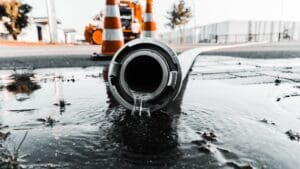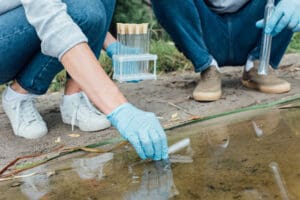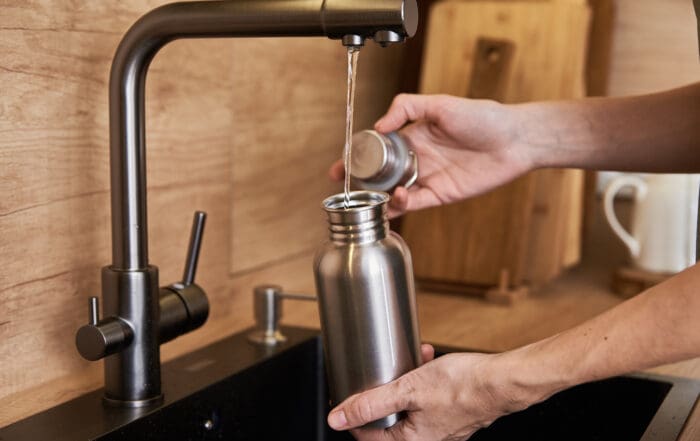
Floods and Faucets: Ensuring Water Quality Following Natural Disasters
August is National Water Quality Month, a time to reflect on the crucial role water plays in our daily lives and the importance of maintaining its purity. Natural disasters such as hurricanes, fires, and tornadoes can wreak havoc on our water systems, contaminating supplies and posing significant health risks. Here at Artesian Bottleless Water, we are dedicated to ensuring that clean, safe water is accessible, especially in the aftermath of such events.
The aftermath of these disasters often leaves communities struggling to secure safe drinking water, highlighting the need for effective water quality measures. So, let’s explore the impact of natural disasters on water supplies and the steps that can be taken to ensure water quality remains uncompromised.
Understanding the Dynamics
How Floods Contaminate Water Sources
Floods, particularly in regions west of the Mississippi River, can lead to severe contamination of water sources. Areas such as parts of Texas, Oklahoma, and Kansas are especially vulnerable due to their susceptibility to heavy rains and flash flooding. During such events, floodwaters can overwhelm the natural filtration capability of the soil, leading to the runoff of harmful chemicals from agricultural fields, sediments, and waste materials into rivers and lakes. This influx disrupts the integrity of drinking water systems by introducing pathogens, chemicals, and debris. Furthermore, the inundation of sewage systems exacerbates the problem, as untreated human and animal waste can seep into potable water supplies. The result is not only a compromised water quality but also a heightened risk of waterborne diseases spreading among the affected populations.
The Impact of Hurricanes and Other Disasters
Hurricanes and tornadoes have a profound impact on water quality, particularly in vulnerable states like Texas and other coastal states. We recently witnessed this with Hurricane Beryl and its impact on Houston. Hurricanes tend to cause widespread infrastructural damage, including the destruction of water treatment plants and pipelines. In the case of hurricanes like Beryl, heavy rainfall and storm surges can lead to significant flooding, mixing freshwater sources with seawater and thereby increasing salinity levels. Additionally, the powerful winds and heavy rains mobilize debris, sediment, and pollutants into water bodies, further degrading water quality.
Tornadoes, on the other hand, while more localized, can similarly disrupt water supplies by damaging wells, tanks, and distribution systems, especially across the plain states like Oklahoma and even into Arkansas and Tennessee. Both types of disasters often result in the contamination of drinking water with pathogens, chemicals, and waste, posing severe health risks to the affected communities. Proper disaster preparedness and rapid response measures are essential to mitigate these impacts and ensure the availability of safe drinking water in the aftermath of such events.
Chemical Spills and Industrial Accidents
Natural disasters can also trigger secondary events like chemical spills and industrial accidents. Factories near water bodies may experience leaks or explosions, releasing hazardous substances into the environment. These chemicals can seep into groundwater or run off into rivers and lakes, making the water unsafe for consumption.

The Impact of the Supreme Court’s Chevron Deference Decision on Water Quality Regulation Post-Natural Disasters
On June 28, 2024, the United States Supreme Court made a landmark decision by overturning the Chevron deference in the case of Loper Bright Enterprises v. Raimondo. For over four decades, the Chevron deference doctrine allowed federal agencies to interpret ambiguous statutes within their jurisdiction, provided their interpretations were reasonable[^1]. This legal framework has been pivotal for regulatory bodies, including those overseeing water quality standards.
Understanding Chevron Deference
Chevron deference originated from the 1984 Supreme Court case Chevron U.S.A., Inc. v. Natural Resources Defense Council, Inc., granting federal agencies significant leeway in interpreting unclear legislative mandates[^2]. This principle shaped how agencies implemented and enforced laws, relying on their expertise in complex regulatory areas.
Implications for Water Quality Regulation Post-Disasters
The recent Supreme Court ruling significantly curtails the power of federal agencies by asserting that courts should no longer defer to agency interpretations when statutory language is ambiguous[^3]. This change introduces critical challenges for local and state governments, particularly when responding to water quality issues following natural disasters.

Increased Judicial Scrutiny
With the end of Chevron deference, regulatory decisions made by agencies like the Environmental Protection Agency (EPA) will undergo more rigorous judicial scrutiny. Courts will be responsible for interpreting statutes directly rather than deferring to agency expertise[^4]. This shift is likely to lead to more legal challenges against regulatory actions, creating uncertainty around the enforcement of water quality standards during disaster recovery efforts.
Delay in Regulatory Actions
Following a natural disaster—such as a hurricane or flood—swift regulatory action is crucial to ensure water safety and public health. However, the heightened judicial involvement could slow down the implementation of emergency regulations aimed at addressing immediate water quality concerns[^5]. Previously, agencies had the flexibility to interpret vague statutes and act promptly, but now they may face prolonged litigation, delaying necessary interventions.
A Lesson from History: Hurricane Harvey in Texas
Consider the aftermath of Hurricane Harvey in 2017, which brought unprecedented flooding and contamination risks to Texas waterways. The Texas Commission on Environmental Quality (TCEQ), working with the EPA, implemented emergency measures to address water quality issues. With the overturning of Chevron deference, any similar future actions may be subject to increased legal scrutiny, delaying vital responses that protect public health[^6].
Challenges for Local Governments
Local governments often rely on state and federal guidance to regulate water quality after disasters. The end of Chevron deference could result in conflicting interpretations of laws, leading to inconsistent enforcement and confusion among local authorities[7]. This inconsistency may hinder coordinated disaster response efforts, making it harder to ensure safe drinking water and proper sanitation.
Potential for Regulatory Rollbacks
In the current legal landscape, stakeholders and industries affected by new water quality regulations might be more inclined to challenge these rules in court. The increased litigation risk can lead to regulatory rollbacks, undermining efforts to maintain high water quality standards during disasters. This rollback potential poses significant risks to communities relying on robust regulations to protect their water sources.
Preparing for the Worst
Individual Preparedness
As an individual, there are many things you can do to prepare for compromised water quality following a natural disaster. We can take several steps to ensure they have access to clean water during a disaster. Stockpiling bottled water is a simple yet effective measure. It’s recommended to have at least one gallon per person per day for at least three days. Water purification tablets and portable filters are also essential items to include in an emergency kit.
Community Efforts
Communities can work together to prepare for water-related emergencies. Establishing local water quality monitoring groups can help identify and address contamination issues quickly. These groups can also educate residents on how to treat water safely at home using methods like boiling, chlorination, or filtration.
The Role of Businesses
In the wake of natural disasters, businesses play a vital role in ensuring their employees have access to safe drinking water. Employers must recognize that disasters can compromise local water supplies, making them unsafe. Therefore, businesses should incorporate water safety measures into their emergency plans.
One crucial step is investing in water purification systems (like bottleless water coolers) for emergencies is also important. Portable water filters and purification tablets can also ensure any available water can be treated and made safe for drinking. Training employees on their use can enhance preparedness.
Beyond immediate response, businesses should collaborate with local authorities and disaster response agencies for a coordinated effort to restore water quality. Participating in community water quality monitoring and sharing resources helps ensure a faster recovery.
Businesses also have a responsibility to educate their employees on water safety during a crisis. This includes information on safe water storage, treatment methods, and recognizing signs of contamination.
Through these proactive measures, businesses can protect their employees during natural disasters and contribute to community resilience and recovery.

Be Prepared With Clean Drinking Water
Ensuring water quality during and after a natural disaster is critical for safeguarding public health and maintaining community resilience. Businesses, in particular, have a significant responsibility to safeguard their employees by investing in robust water purification systems.
Our offers state-of-the-art bottleless water and ice coolers as well as specialized purification systems that are essential in crisis preparedness. These solutions not only provide immediate access to clean drinking water but also promote overall employee well-being. To learn more about how our water systems can protect your team, contact the experts at Artesian Bottleless Water today. Don’t wait for a disaster; prepare now to ensure the health and safety of your workforce.
Sources:
[^1]: Supreme Court Opinion
[^2]: SCOTUS Blog Analysis
[^3]: NRDC Analysis
[^4]: Federal News Network
[^5]: Jackson Lewis Insights
[^6]: KFF Issue Brief
[^7]: WBUR Analysis



